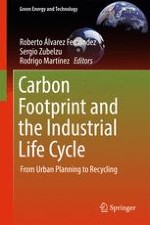2017 | OriginalPaper | Buchkapitel
19. Modeling a Low-Carbon City: Eco-city and Eco-planning
verfasst von : Wynand Lambrechts, Saurabh Sinha
Erschienen in: Carbon Footprint and the Industrial Life Cycle
Aktivieren Sie unsere intelligente Suche, um passende Fachinhalte oder Patente zu finden.
Wählen Sie Textabschnitte aus um mit Künstlicher Intelligenz passenden Patente zu finden. powered by
Markieren Sie Textabschnitte, um KI-gestützt weitere passende Inhalte zu finden. powered by
